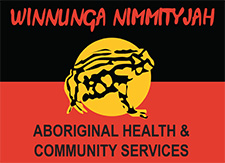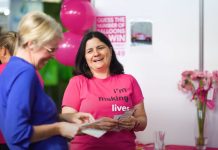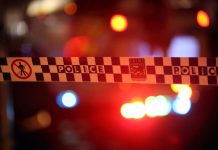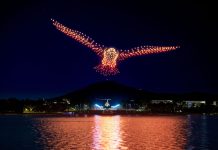
Canberra’s only community-controlled Aboriginal health service, Winnunga Nimmityjah celebrated 30 years of community service on Wednesday 12 September.
Winnunga Nimmityjah began in 1988 as a part-time service in Civic, and now employs 80 people delivering 52,000 “occasions of service” each year.
Winnunga CEO, Julie Tongs, says the story of Winnunga is “remarkable”.
“It began as an infinitesimal, part-time service based in borrowed rooms at Civic’s Griffin Centre [in] 1998 and continued to operate from that venue through 1989 and 1990 with a mere handful of staff,” Ms Tongs said.
“It wasn’t until 1991 that it opened on a full-time basis – with just one GP (the late Dr Peter Sharp), four health workers and a receptionist.”
Ms Tongs said early on, like most Aboriginal medical services, the centre had to contend with minimal equipment, incredibly tight funding and a great deal of work being done on a volunteer basis.
“We then moved to Ainslie and again we had to battle incredibly hard for recurrent funding to introduce initiatives and programs to help the sickest of all Australians”.
Winnunga – which means ‘strong health’ in the Wiradjuri language – offers bulk-billed services from general practitioners, psychologists, physiotherapists, dentists, midwives and nurses, as well as providing a range of community health programs.
“In short, Winnunga is a one-stop shop,” Ms Tongs said.
“Sadly it is still true to say that for several reasons, including historical and cultural ones, mainstream health services have made it difficult for Indigenous Australians to use them. Many Aboriginal Australians will go without primary health care if a service that specifically welcomes them and responds appropriately to their needs is not available.
“Furthermore, it is also still true that the vast majority of GPs in Australia have never serviced an Indigenous client.”
Ms Tongs said a great thank-you was due to the many hundreds of people who over the years had worked tirelessly to see Winnunga grow and prosper.
“There can be no doubt that Canberra’s Indigenous population supports the service. That has been reflected constantly over many years since Winnunga first began seeking community feedback on what they thought of the service they were receiving,” she said.
Zoo signs international MOU
In Canberra this week, The National Zoo and Aquarium (NZA) signed a Memorandum of Understanding (MOU) with Wellington Zoo in New Zealand and Singapore Wildlife Reserves.
Focusing on “animal conservation and environmental security”, the institutions agreed to activities including: cooperating to deliver staff training; offering staff exchanges; sharing information such as animal care manuals, conservation and sustainability processes; partnering in conservation projects of mutual interest; and conducting joint workshops or roadshows to promote animal welfare.
NZA director Richard Tindale said the zoo looks forward to working with both institutions on “future conservation projects as well as the opportunity to share knowledge and skills between our like-minded institutions and staff”.
Wellington Zoo chief executive Karen Fifield said “this partnership enables us to put our combined weight behind conservation programs, sustainability initiatives and advancing animal welfare in our zoos”.
The MOU will be effective for five years, with plans for annual reviews.
For more:








